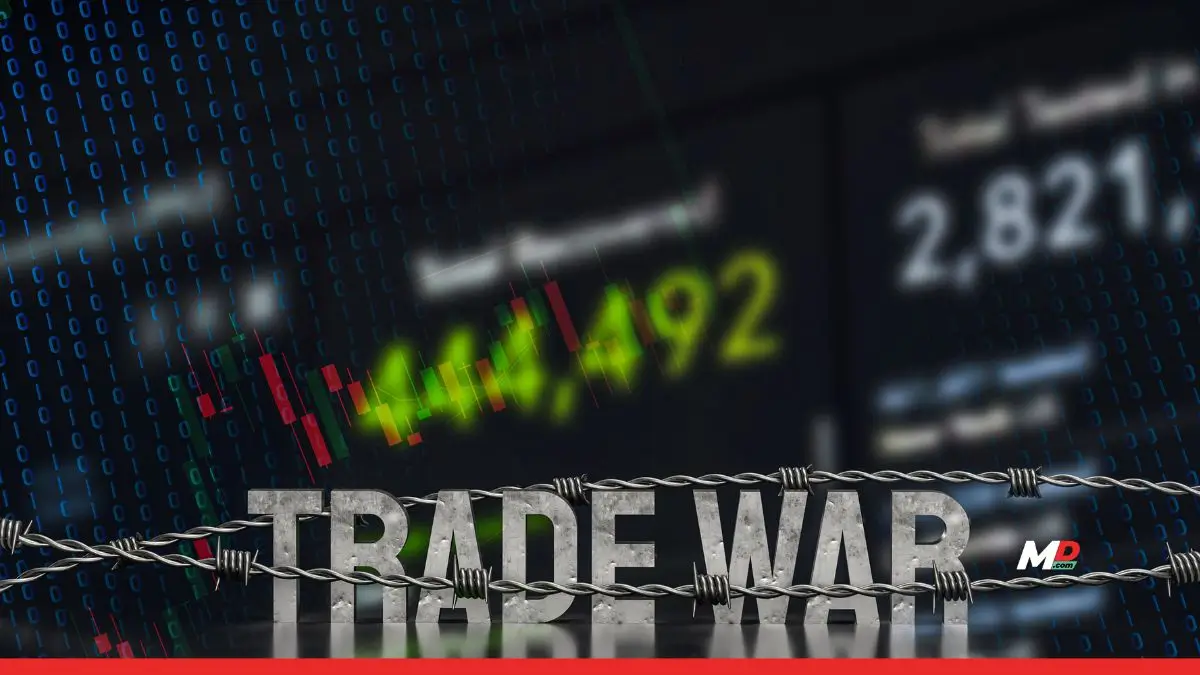Published
9 months agoon
By
Ann Uruvath
U.S. Imposes Heavy Duties on Imported Vehicles
In a move set to reshape global supply chains, U.S. President Donald Trump has introduced a 25% duty on imported automobiles and essential vehicle components. This directive, taking effect on April 3, is intended to bolster domestic car manufacturing by encouraging automakers to invest within the United States.
Tariffs Cover Vehicles and Critical Components
The sweeping levy applies not only to fully built vehicles but also to crucial components, including powertrain elements, engines, transmissions, and electrical assemblies. According to White House estimates, the policy is projected to generate $100 billion annually, signaling a marked shift in trade strategy.
How India’s Auto Industry Could Be Affected
Though India’s direct automobile exports to the U.S. are modest compared to Mexico, Canada, and Japan, the ripple effects of these tariffs could significantly impact the country’s auto parts sector. India plays a pivotal role in supplying key components to American automakers, with exports valued at approximately $1.5 billion in 2023. The new duties could drive up production costs for U.S.-based car companies, diminishing demand for Indian-made parts and squeezing profit margins for suppliers.
Tata Motors and Other Indian Manufacturers Face Challenges
One of the most notable repercussions has been observed in Tata Motors, which saw a 5% decline in share value following the announcement. The company’s subsidiary, Jaguar Land Rover, which exports luxury vehicles from Europe to the U.S., may face higher costs, potentially leading to price revisions or even production relocations.
Domestic manufacturers like Maruti Suzuki and Tata Motors are somewhat shielded due to their primary focus on India’s market. Jaguar Land Rover, a subsidiary of Tata Motors, is likely to experience financial strain as it exports luxury vehicles to the U.S. Indian auto component firms such as Bharat Forge and Motherson Sumi may need to explore alternative markets in Europe, Africa, or Southeast Asia to sustain business growth. Experts believe Indian automakers may not be significantly affected since fully assembled vehicles from India do not directly enter the U.S. market. Despite industry concerns, some trade analysts argue that India’s minimal footprint in the U.S. automobile market could mitigate the adverse effects of these tariffs.
Trump’s Broader Trade Strategy and Implications for India
Trump’s tariff decision aligns with his broader strategy of imposing reciprocal trade policies, particularly against nations with high duties on American products. India’s longstanding high import taxes on foreign vehicles—exceeding 100% in some cases—have previously been a contentious issue in U.S.-India trade discussions. Should the U.S. extend similar levies to other sectors, such as pharmaceuticals, agriculture, or technology, India could see losses of up to $7 billion annually, further straining economic ties between the two nations.
Mixed Industry Reactions to the New Tariffs
The policy has drawn mixed reactions. Jennifer Safavian, CEO of Autos Drive America, criticized the tariffs, warning that they would inflate car prices, reduce consumer options, and jeopardize manufacturing jobs. Tesla CEO Elon Musk acknowledged the financial burden on manufacturers, including his own company, despite Tesla’s relatively strong domestic production base. The United Auto Workers union, on the other hand, welcomed the move, citing potential job creation within the U.S. auto industry.
Global Impact: Disruptions in the Auto Supply Chain
Beyond India, the policy is set to disrupt key automobile-producing nations such as Canada, Germany, Japan, Mexico, and South Korea. The resulting trade shifts may slow global economic activity, prompting companies to rethink their supply chains. For India, while the immediate risks are moderate, long-term effects could be substantial. Suppliers reliant on the U.S. market must adapt swiftly by diversifying their export destinations or strengthening their presence domestically.
Ongoing Trade Talks Between India and the U.S.
A U.S. trade delegation led by Assistant Trade Representative Brendan Lynch is currently in India for negotiations running from March 25 to 29. The discussions aim to finalize a bilateral trade agreement, especially as reciprocal tariffs loom over multiple industries. The goal is to smooth trade relations and enhance market access while reducing existing trade barriers. India may consider lowering import duties on certain U.S. goods in exchange for favorable trade terms. The first phase of the agreement is expected to conclude by autumn 2025, with a vision to expand U.S.-India trade to $500 billion by 2030.
Tesla Stands to Gain as Rivals Face Higher Costs
Trump’s new tariff framework has inadvertently positioned Tesla as a potential beneficiary. Unlike competitors such as Hyundai, Volkswagen, and General Motors, which import vehicles into the U.S., Tesla assembles its cars domestically in California and Texas. This means Tesla remains largely unaffected by tariffs on finished vehicles, whereas rivals relying on foreign factories—especially those producing in Mexico—will face rising costs. With models such as the Tesla Model Y and Model 3 dominating the U.S. electric vehicle market, the company is likely to strengthen its competitive advantage.
Challenges Remain for Tesla Despite Domestic Production
However, Tesla isn’t entirely insulated. Many of its key components, including batteries and motors, are imported—primarily from China—meaning the company must navigate higher input costs. The firm will need to decide whether to absorb these expenses or adjust vehicle prices accordingly.
What Lies Ahead for India’s Auto Industry
As Trump’s trade policy reshapes the global auto landscape, affected companies and nations must make strategic adjustments. India’s automotive sector, while not the primary target, cannot remain complacent. With careful planning and market diversification, Indian firms can turn these challenges into opportunities for expansion and resilience in an evolving trade environment.


India’s Growth Engines Awarded: Most Preferred Workplaces 2025 Set New People-Centric Benchmarks


India’s Growth Engines Awarded: Most Preferred Workplaces 2025 Set New People-Centric Benchmarks


CBI books Anil Ambani’s son, RHFL in ₹228 Crore bank fraud case


Quick-Commerce Heading for Shakeout as Funding Model Fails, Warns Blinkit CEO


Venkatesh Iyer never looked at us during trials and I thought he was someone with a lot of attitude : Abhishek Nayar


Welspun One expands footprint with 46-acre Talegaon MIDC project; unveils ~INR 550 crore plan for a next-generation logistics park

